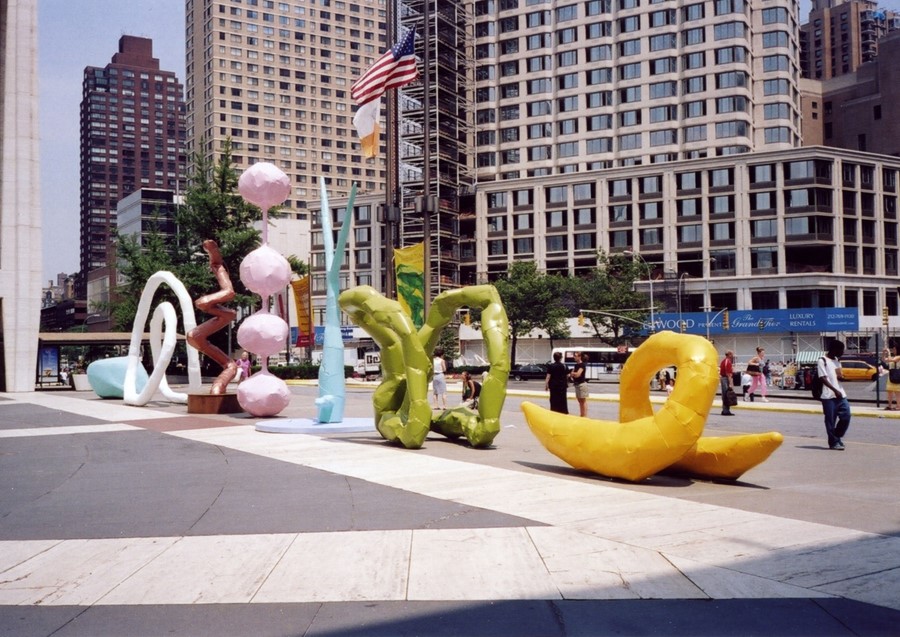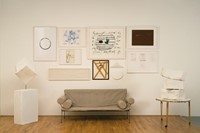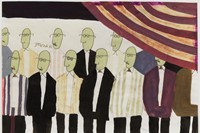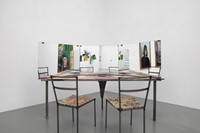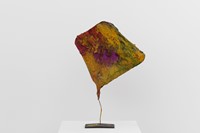Speaking to AnOther, Sarah Lucas opens up about her relationship with the Austrian artist and the experience of curating his Tate retrospective, which opens today
What’s better than an exhibition by one really good artist? A collaboration between two really good artists. Sarah Lucas – one of the most visually experimental members of the YBA generation – has been invited by the Tate Modern to use her own visual language as a structure to display and present Franz West’s just-opened retrospective. It’s a nod to a creative relationship between the two artists that lasted until his death. As she jokes: “Life’s a collaboration, even if you’re not making art.”
Franz West was one of the originators of shit and mess as a theme in contemporary art. He loved to break taboos with his loop squiggle and swirl sculptures. He invited interaction and conversation with his pieces. He took the crude and trivial and gave it meaning and form. West made sense out of the senseless. Lucas, though she emerged decades later, equally made work that pushed buttons, inspired laughter and rethought the basics around what art is.
Lucas and West worked together a few times, though they only made one official collaboration. “He sent me a big rock-like thing with some paint on it and I put a fried egg on it,” she tells AnOther. Prior to this he had invited her to be in a show at the Austrian Cultural Institute in London. They became closer in 2007 during a DIY exhibition West created in Venice. “The first time we met was the Hamster Wheel thing – a show in the Venice Biennale. It wasn’t officially part of [the biennale]. He got hold of some great big space on the opposite side of the water from the Arsenale and invited various people he liked. I was one, Gelitin was another. A bunch of people. It was really difficult to get to by the vaporetto. There were no boats. Gelitin made a bunch of rafts and rowed people completely naked. It was eventually shut down by the police. That’s when I got to know him more personally,” she remembers.
The main contribution Lucas has made to the Tate show is how things are displayed – thick grey walls and pedestals. “I always had a pedestal problem... When you’ve got to put it on something it’s a bit weird. I’ve come up with some devices that I’ve found useful. Particularly breeze blocks. You don’t have to decide everything in advance with a bunch of breeze blocks. You can just turn up. I just travel with half a ton of them. You can really mess about with the scale of them and the height,” Lucas explains. “And colours look really great against the grey.” West’s pinks and blues, textured plaster and rough metal, pop against her construction-grey walls and bricks. The pairing transforms both artists’ work. It gives the entire retrospective life.
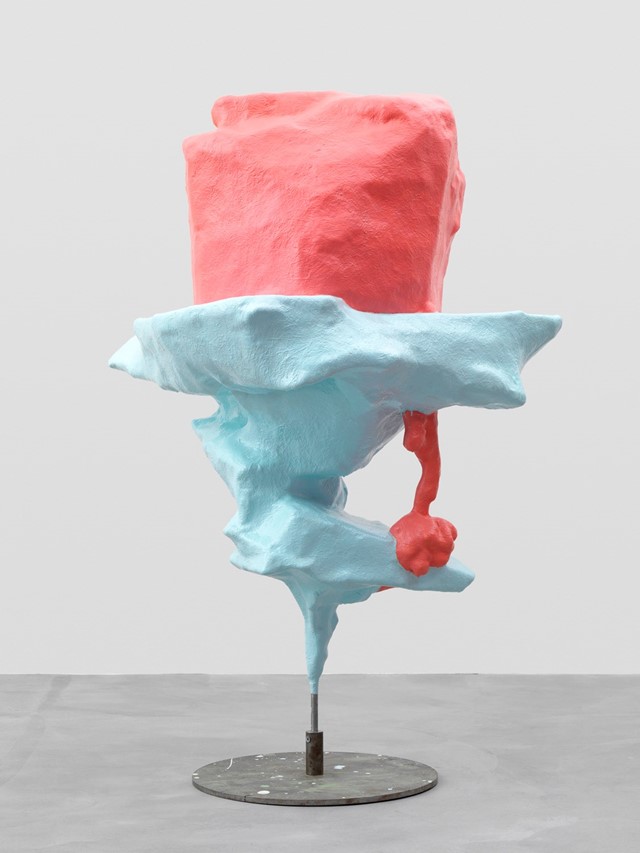
Lucas and West both made work that was funny. One of the subtle humorous things Lucas has done at the Tate show is to highlight the low barriers that prevent the public stumbling in and destroying the art. She made them a vibrant West-like yellow, blue, pink and green. “I could imagine Franz saying just paint them,” she laughs. “They’re taped with masking tape, which completely chimes in with Franz’ work, as well as the colours.”
It was Lucas’ use of furniture that really appealed to Franz. He dryly said her “chairs” were his favourite. Lucas has incorporated chairs and desks in a number of pieces, including furniture using mass-produced construction materials, including her signature breeze blocks. Her misuse and reinvention of the chair echoed West’s own obsession with furniture. He made shelves, beds, chairs and tables. The Tate show alone contains at least 30 seats. There are metal love seats, welded armchairs, and tens of divans covered in waxed African textiles or old Moroccan rugs.
This is the second time the Tate has invited an artist to curate and position another artist’s work. Richard Hamilton did it to his friend Marcel Duchamp in 1966. “It only works when toilets are involved,” Lucas observes. For her, working with West’s legacy has been motivating. “I’ve really enjoyed spending time with his work again. He’s really the most inspiring artist. Especially because it’s really about making with whatever you’ve got. You don’t even have to have an idea! That’s the real genius of Franz.”
Franz West is at Tate Modern until June 20, 2019.
